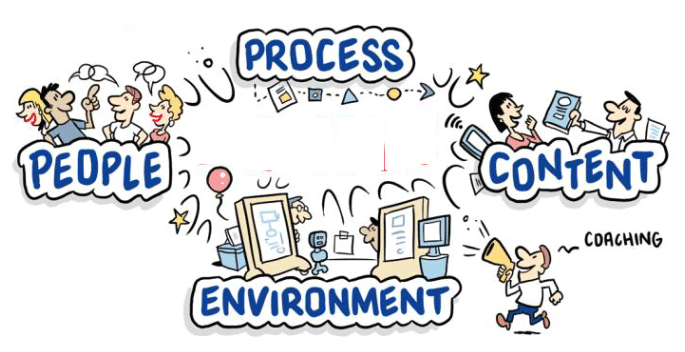De afgelopen weken las ik twee boeken die eigenlijk over hetzelfde gaan: door te denken vanuit de klant en technologie als middel in te zetten, ben je als onderneming in deze tijd en in de toekomst succesvol. Michel Schaeffer schrijft als insider over “Het geheim van Bol.com” en Steven van Belleghem geeft in “Customers the day after tomorrow” zijn visie op de ontwikkeling en inzet van nieuwe technologieën in de klantrelatie. Boeken die je als marketeer gelezen moet hebben!
Voor B2B-marketeers organiseert het NIMA in januari een interactieve sessie met Steven van Belleghem.
Van zoeken, naar gevonden worden, naar ontdekken
Beide auteurs geven een overzicht van de enorme ontwikkeling op het gebied van marketing en e-commerce van de afgelopen decennia. Wat een revolutie is dat geweest: in 1995 kwam met de zoekmachine Netscape een wereld aan informatie beschikbaar op internet. Klanten konden opeens zelf naar hun producten zoeken en zonder in een winkel te komen al een keuze maken. Natuurlijk had nog niet ieder bedrijf zijn online informatie op orde. Veel bedrijven hadden zelf nog geen website. Maar het begin was er. Uiteraard moest je toen nog wel naar een winkel om het product aan te schaffen.
Door de komst van de IPhone in 2007 was die informatie altijd en overal beschikbaar. Mobile first dus. De keuzestress nam toe, maar de mogelijkheden om online op basis van reviews van andere gebruikers de juiste keuze te maken ook. Bedrijven moesten de switch maken om in plaats van klanten te zoeken, gevonden te worden op internet. Met relevante informatie klanten aan te trekken. Voor mijn gevoel zitten we nog steeds in deze fase, waarin social media een belangrijke rol spelen.
Maar beide auteurs geven aan dat we niet op onze lauweren moeten rusten. Nieuwe ontwikkelingen vragen onze aandacht. Ontwikkelingen waar we nu al in moeten investeren om straks de boot niet te missen. Connectiviteit, verregaande automatisering (bots) en Artificial Intelligence moeten onze klanten een superervaring geven: Customer Centricity in optima forma. Deze nieuwe fase gaat verder dan het voorzien van een geïdentificeerde behoefte. Het gaat hier om het ontdekken, personaliseren en opwekken van een nieuwe vraag.
Het succes van Bol.com
Het boek van ex-marketingdirecteur Michel Schaeffer leest als een thriller. De rode draad? Een continue focus op de klant en vandaaruit keuzes maken. Dus niet winst maken, maar de klant de beste online ervaring bieden die er is. Zo was het achteraf betalen met een acceptgirokaart in de beginjaren revolutionair. Geen enkele onderneming wilde dat risico lopen. Door het toch te doen, slechtte Bol.com de hoge drempel van het online aankopen doen.
Het stellen van ambitieuze doelen zit er vanaf het begin in bij Bol.com. De beste (online)winkel willen zijn, klinkt heel eenvoudig, maar heeft verregaande consequenties. Hoe je je onderscheidt van de concurrentie is daarbij de belangrijkste vraag. Bol.com ging andere verkopers toelaten op hun platform, waardoor het assortiment compleet werd en de beste prijs gerealiseerd kon worden. Alles in het belang van de klant. Want hij of zij is vaak op zoek naar dat boek of die game die niet meer gedrukt of gemaakt wordt. Via (tweedehands)verkopers worden ook die klanten tevredengesteld. Concurrentie binnen het eigen platform levert dus uiteindelijk veel op, maar was wel een enorme strategiewijziging, die getuigde van echt ondernemerschap.
Big data
Voordat het al zo heette, maakte Bol.com al keuzes op basis van big data. Alle muisklikken en voorkeuren werden immers vastgelegd en klanten lieten hun gegevens maar al te graag achter om snel hun product in huis te hebben. Algoritmes bepalen op dit moment wat je als klant ziet als je op de website komt. Personalisatie in optima forma, waardoor je je als klant begrepen voelt. En dat leidt weer tot een aankoop in slechts een of twee muisklikken.
Voor Steven van Belleghem vormen big data ook de basis van de perfecte klantervaring. Doordat we steeds meer devices gebruiken, die met internet verbonden zijn – denk aan Toon, smartwatch, tablet en smartphone – worden dat er steeds meer. De klant wil sneller dan realtime, superpersoonlijk en zo gebruiksvriendelijk mogelijk geholpen worden. Bots realiseren dat door de conversatie met de klant te automatiseren. Ze staan de klant bij in alle fases van het koopproces. De eerste stappen zijn daarvoor dit jaar al gezet.
Marketing voor machines
Algoritmes bepalen inmiddels wat je als klant koopt of gaat kijken. Niet alleen bol.com en amazon.com laten zien welk boek of product bij je past. Ook Netflix past het algoritmes toe om je te verleiden een volgende serie of film te bekijken.
Voor marketeers is er dus werk aan de winkel. Niet alleen moet als je marketeer bezig zijn met behoefte kweken bij personen, ook moet je een strategie bedenken om de algoritmes te beïnvloeden. Niemand weet nog hoe dat moet. Het zal een kwestie van try and error zijn. Belangrijk is dat je ermee bezig gaat. Nog meer dan bij contentmarketing geldt hier: zorg dat je op tijd bent! Steven vertelt er meer over in zijn boek en in zijn vlog.
The human factor
In al dit digitale geweld blijft de menselijke factor onmisbaar. Een computer of algoritme kent geen passie en enthousiasme. Daarmee maak je als bedrijf gelukkig nog steeds het verschil.
NIMA B2B organiseert op 24 januari 2018 een middagsessie met Steven van Belleghem met als titel: Digital revolution in B2B – lead or die? Meer informatie en inschrijven kan hier.



![The Most Important B2B Digital Marketing Trends and Stats of 2017 [Infographic]](https://www.nima.nl/wp-content/uploads/2021/04/meeting-zakelijk-scaled.jpg)






 In the first two blogs on serious creativity, I focused on the mindset of people and some ideation techniques. Assuming that you have assembled the right people and defined the content carefully, getting the most out of your teams and creating magic ALSO requires a specific process and a creative environment. Let’s start with the WHY.
In the first two blogs on serious creativity, I focused on the mindset of people and some ideation techniques. Assuming that you have assembled the right people and defined the content carefully, getting the most out of your teams and creating magic ALSO requires a specific process and a creative environment. Let’s start with the WHY.




 When I thought about the meaning of mental agility, it reminded me of lateral thinking, which Edward de Bono explained to me in the 1990s. His serious creativity course was a life-changing experience for me, as, from that day onward, I started to consciously train myself to escape from the mainstream.
When I thought about the meaning of mental agility, it reminded me of lateral thinking, which Edward de Bono explained to me in the 1990s. His serious creativity course was a life-changing experience for me, as, from that day onward, I started to consciously train myself to escape from the mainstream.